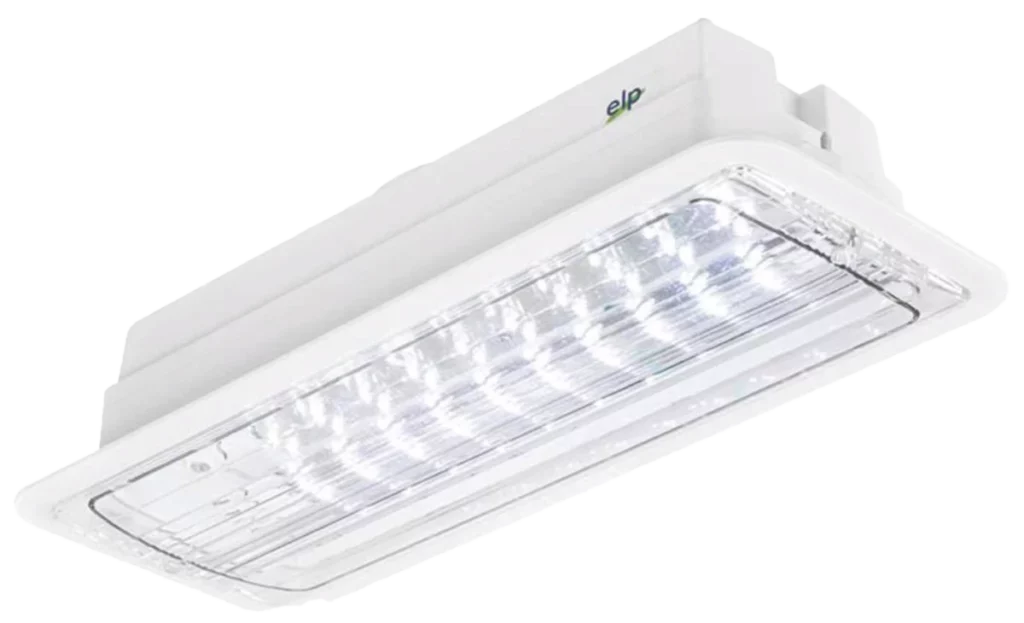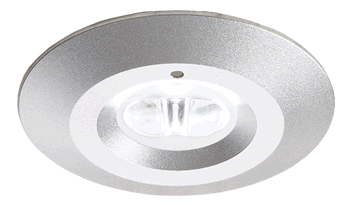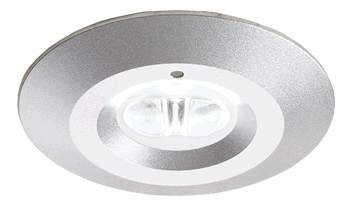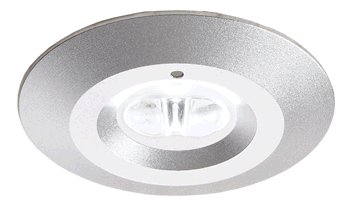
DALI emergency lighting modules, and self-test emergency lighting modules, automatically carry out the monitoring and routine tests required of all emergency escape lighting systems.
Both DALI and self-test protocols ensure that your emergency lighting is monitored and tested in compliance with UK standards, carrying out a monthly function test and an annual full-rated duration test.
Whether you use an automatic testing system with self-contained stand-alone luminaires (self-test) or self-contained centrally monitored luminaires (DALI), automatic monitoring ensures you always know the status of your emergency fitting.
We want our fittings to provide flexibility for our customers. When purchasing with ELP, you won’t have to choose between DALI and self-test options, because we offer a range of products with both protocols enabled.

Self-test emergency lighting fittings perform a self-commissioning test of the emergency lighting product at the first power on. After charging for 24 hours, a full duration test (three hours) is performed. Initial function and duration tests are randomly generated. They are then performed in accordance with standard requirements (every seven days for function tests and every 52 weeks for duration tests).
The DALI emergency lighting testing and control system offers both flexibility and reliability. With DALI, users can set up and view monitoring and testing from a central DALI command centre, such as our Surepath system.
Our DALI emergency lighting modules are designed to be compatible with IEC 62386-202 and our modules are DALI device type 1, suitable for use on a dedicated DALI emergency lighting system. They are also suitable for use in conjunction with other DALI compatible devices as part of a DALI general lighting system. The DALI protocol is set out in the technical standard IEC 62386.
DALI boasts many features, including:

ELP DALI modules adapt their operating mode depending on whether a DALI bus/signal is connected
The module can be connected to the DALI bus via non-polarity sensitive da/da terminals.
Once the module has received a valid DALI command, the module enters DALI mode and adopts default settings. These include a function test interval of seven days and a duration test interval of 52 weeks.
Settings can be modified via the DALI bus using appropriate DALI configuration commands. These commands are detailed in IEC 62386-202.
If the DALI bus is disconnected, the module will still use the DALI mode settings. If these settings have not been put in place, the module will revert back to the initial, randomly generated, functional and duration test dates.
When operating with a DALI bus, modules may be configured for two types of testing regimes:
Function and duration tests are initiated by the module. Modules perform automatic self-testing according to the locally stored settings.
Function and duration tests are initiated by the master controller.
A single bi-colour indicator LED is fitted in all DALI and self-test products. This LED is clearly visible for manual inspection. It indicates the module status. The LED shows permanent green or flashing green when conditions are normal, and permanent red or flashing red if a fault condition is present.

Both DALI and self-test modules perform the following two types of test, in accordance with IEC 62034:
A function test is a 30 second test that simulates a mains failure and checks the operation of the emergency light source from the battery supply.

The local indicator LED fast flashes green whilst the function test is in progress.
If there is a failure during a function test, the local indicator LED either changes to a permanent or flashing red to indicate the failure mode, and the appropriate DALI status flag is set.
A duration test simulates a mains failure. It also checks the operation of the emergency light source from the battery supply for the rated duration of the module.

The local indicator LED slowly flashes green whilst the duration test is in progress.
If there is a failure during a duration test, the local indicator LED either changes to a permanent or flashing red to indicate the failure mode, and the appropriate DALI status flag is set.
Automatic test systems require that an annual duration test shall only be started after the battery has had an uninterrupted 24-hour charge period.





Parbrook House
Gillmans Industrial Estate
Natts Lane
Billingshurst
West Sussex RH14 9EZ
Tel: +44 (0)1403 786601
Fax: +44 (0)1403 786602
Email: sales@elp.uk.com
© 2021 Emergency Lighting Products Ltd. All Rights Reserved.